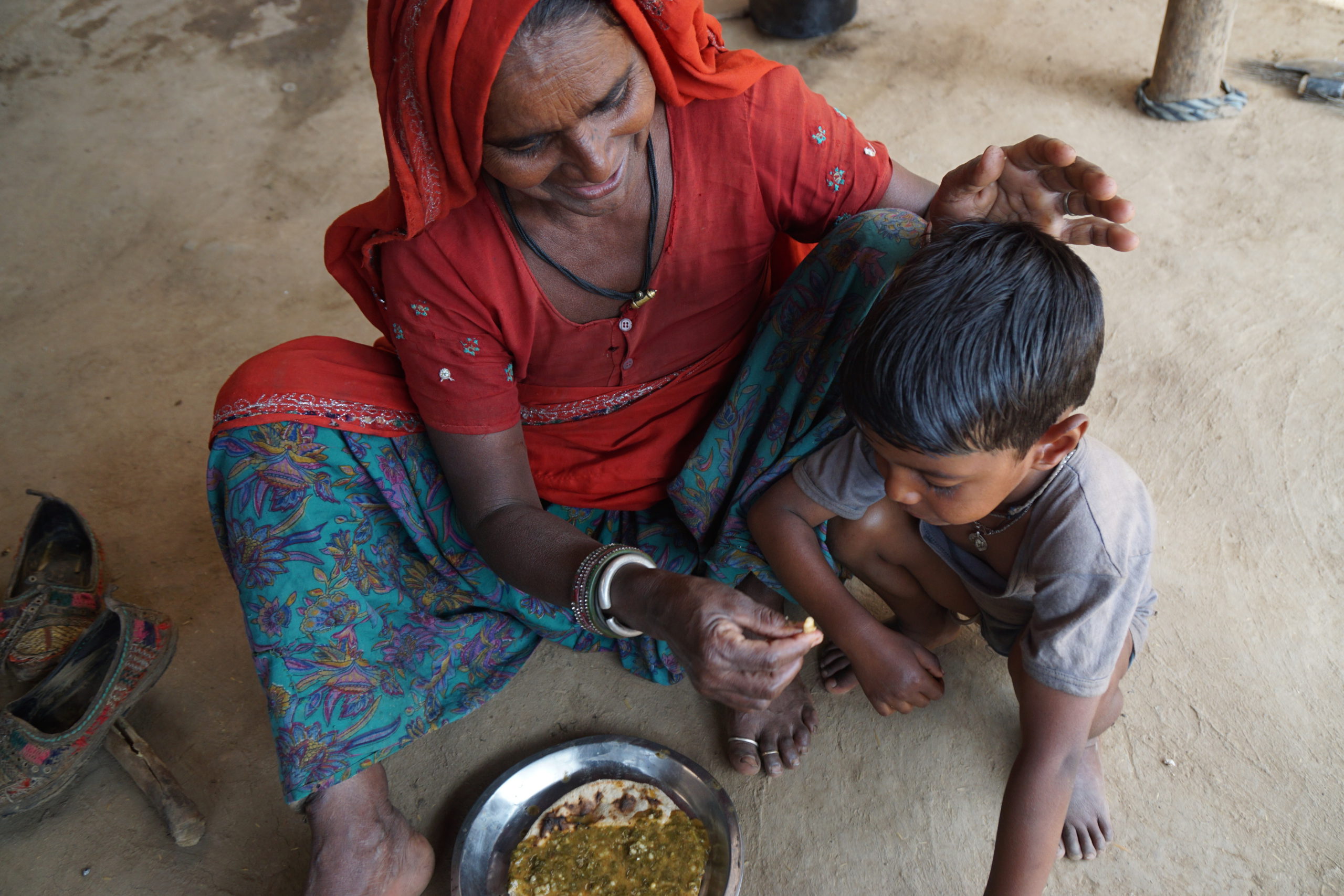INDIA is the world’s second-largest producer of food grains. Yet, the persistent issue of malnutrition has plagued the country for decades. Despite an abundance of food, a significant portion of the population continues to suffer from undernutrition or malnutrition in India, undermining the nation’s progress in health and economic development. Delving into the complex factors contributing to malnutrition in India, highlights the urgent need for comprehensive and multifaceted solutions.
Understanding the paradox
India’s paradox of plenty is the result of multiple factors ranging from agricultural practices to the low levels of protein in diets of rural and urban poor. While India boasts substantial food production, the distribution system faces challenges, leading to uneven access to nutritious food. Several factors contribute to this paradox.
The surplus food produced in India is not distributed evenly across the country. Some regions, particularly rural areas, face logistical hurdles, inadequate infrastructure, and lack of proper storage facilities, resulting in food wastage and reduced availability for vulnerable populations.
The availability of staple grains does not solely determine food security. Ensuring a diverse and balanced diet is crucial for combating malnutrition in India. However, many individuals, particularly those in impoverished communities, lack access to a varied range of nutrient-rich foods, including fruits, vegetables, pulses, and proteins.
India experiences significant post-harvest losses due to inefficient storage, inadequate transportation facilities, and limited processing capabilities. These losses further exacerbate the challenge of food availability, leading to reduced access to nutritious options for vulnerable populations.
Reasons behind malnutrition in India
Poverty and Inequality: Poverty and income disparities contribute to limited purchasing power, making it difficult for vulnerable populations to afford a nutritious diet. The high cost of nutritious food items, coupled with limited financial resources, leads to compromised dietary choices.
Gender Disparities: Women and girls often face discrimination and limited decision-making power within households, affecting their access to adequate nutrition. Cultural norms and practices may prioritize male family members’ nutritional needs, leaving women and girls more susceptible to malnutrition in India.
Limited Education and Awareness: Lack of awareness about proper nutrition and dietary practices plays a significant role in perpetuating malnutrition in India. Inadequate education, particularly among marginalized communities, hinders individuals from making informed choices regarding food selection and preparation.
Healthcare and Sanitation
Inadequate healthcare infrastructure and poor sanitation further contribute to the prevalence of malnutrition
Inadequate Healthcare Services: Limited access to quality healthcare, particularly in remote areas, hampers early detection and treatment of malnutrition-related conditions. Additionally, the lack of healthcare facilities capable of addressing the complex nutritional needs of malnourished individuals poses a significant challenge.
Water and Sanitation: Poor sanitation facilities and lack of access to clean drinking water contribute to the prevalence of waterborne diseases and infections, which further compromise individuals’ nutritional status.
India’s struggle with malnutrition, despite its surplus food production, highlights the multidimensional nature of the problem. Addressing malnutrition in India requires comprehensive and coordinated efforts that encompass improvements in food distribution systems, agricultural practices, education, healthcare infrastructure, and social equality.
To combat malnutrition effectively, India must focus on empowering vulnerable communities, investing in education and awareness programs, enhancing agricultural infrastructure, and strengthening healthcare systems. Additionally, promoting sustainable farming practices, diversifying crops, and ensuring equitable distribution of nutritious food are crucial steps toward achieving food security and combating malnutrition in India. Only through concerted efforts can India overcome this paradox.
What the government is doing to fight malnutrition
The government of India has recognized the critical issue of malnutrition and has accorded it high priority. To combat this pervasive problem, several schemes and interventions have been implemented under the Umbrella Integrated Child Development Services (ICDS) Scheme.
One of the key initiatives is the Anganwadi Services, which aims to provide a package of essential services to promote the holistic development of children, pregnant women, and lactating mothers. These services include supplementary nutrition, immunization, health check-ups, and pre-school education, all aimed at tackling malnutrition at an early stage and ensuring the overall well-being of beneficiaries. Another significant scheme is the Scheme for Adolescent Girls, which focuses specifically on the nutritional needs of adolescent girls. It aims to improve their nutritional status through the provision of iron and folic acid supplementation, health and nutrition education, and counseling on adolescent-related issues. By empowering young girls with proper nutrition and knowledge, this scheme contributes to breaking the cycle of intergenerational malnutrition.
Additionally, the Pradhan Mantri Matru Vandana Yojana (PMMVY) plays a crucial role in addressing malnutrition among pregnant and lactating women. Under this scheme, financial assistance is provided to eligible women to support their nutritional needs during pregnancy and lactation, ensuring a healthy start for both mother and child. These targeted interventions under the ICDS Scheme demonstrate the government’s commitment to combating malnutrition in the country. By addressing the nutritional needs of children, adolescent girls, and pregnant/lactating women, these initiatives strive to improve the overall health and well-being of the population, breaking the vicious cycle of malnutrition and paving the way for a healthier future.
The Role of NGOs
Non-Governmental Organizations (NGOs) play a pivotal role in addressing this challenge. These organizations work tirelessly in various sectors, including food donation, education, healthcare, sanitation, and more, aiming to alleviate poverty and malnutrition. Some NGOs focus on helping the poor, providing not just meals, but also resources to empower individuals and communities, facilitating sustainable improvements in nutrition.
Food Donation
NGOs for food donation are instrumental in addressing India’s food distribution issue. They gather surplus food from restaurants, caterers, and individual donors and distribute it to those in need. These organizations not only prevent wastage but also play a crucial role in ensuring that nutritious food reaches marginalized populations, thereby contributing to reducing malnutrition.
Environmental NGOs
Environmental NGOs work toward sustainable development and conservation, which indirectly influence food security and nutrition. By promoting sustainable agricultural practices, they help improve the yield and quality of crops, ensuring a consistent supply of nutritious food. Furthermore, their initiatives to conserve water bodies and ensure access to clean drinking water are vital for maintaining the overall health of communities.
The Impact of Crowdfunding and Fundraising in India
The growing prominence of crowdfunding in India has ushered in a new era of philanthropy. Crowdfunding platforms have democratized fundraising, making it easier for individuals and NGOs to raise funds for various causes, including food security and nutrition initiatives. Some notable Indian crowdfunding platforms include Ketto, Milaap, and GiveIndia.
These platforms have given NGOs a powerful tool to raise funds for various initiatives, from setting up community kitchens and food banks to launching nutrition education programs. They have enabled individuals to contribute to causes they care about, helping to bridge the gap between those who want to help and those who need it.
Moreover, these platforms have also provided a means for individuals and communities affected by crises or natural disasters to raise funds for immediate relief and long-term recovery, including food and nutritional support.
NGOs, with their myriad initiatives, serve as crucial change-makers, bridging the gaps left by government programs and striving for holistic solutions to malnutrition in India. Supported by the growth of fundraising and crowdfunding platforms, these organizations are better equipped than ever to bring about meaningful, lasting change in the fight against malnutrition. Together, they represent hope for a healthier future for all Indians. To do your part to combat malnutrition and ensure that the most vulnerable groups of people across India have access to fresh and nutritious meals, pledge your support here:
Support Mission: Feed The Hungry
–
Give’s mission is to “make giving bigger and better.” Give is the most trusted donation platform in India for fundraisers and crowdfunding campaigns. Through our technology solutions, we enable individuals and organisations to fundraise and donate to a cause, charity or NGO with trust and convenience. Give’s community of 2.7M+ individual donors and 300+ organisations supports 3,000+ verified nonprofits with 80G deduction and serves 15M+ people across India. Find a fundraiser today!

Choosing to tread the proverbial road less travelled, Ramon embarked upon a career in journalism and spent over 8 years working for various media organisations. A deeper calling to create a sustainable impact in the lives of the less fortunate compelled him to join the social sector. Ramon is a minimalist at heart and an explorer in spirit.
Discover more from
Subscribe to get the latest posts sent to your email.

